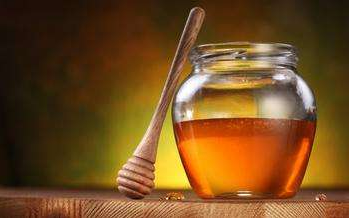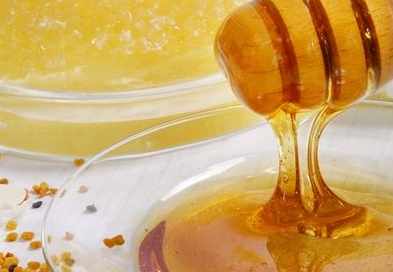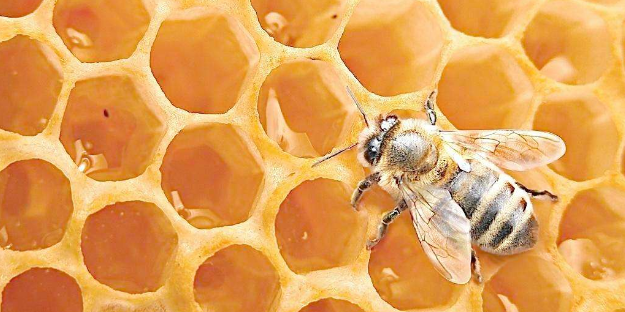1 storage Â
1.1 Use a suitable container
Honey is a weakly acidic liquid. Contact with metal will cause oxidation. Therefore, it must be stored in non-metallic containers (except stainless steel drums) such as cylinders, wooden barrels, non-toxic plastic drums, etc., but washed and dried. Honey storage areas can be established in areas with high honey yields. The storage container should be clean and dry, the stored honey should not be too full, and 2% to 30% of the space should be reserved during transportation to prevent the honey juice from overflowing or rupturing the container when it is shaken by heat. Store the honey at room temperature at 5 ~ 10 ° C, do not put the honey bucket in the open air for a long time. Â
1.2 varieties storage
There are different types of honey everywhere. Honey of different flower species has different color, aroma and taste. Even in the same area, there are differences, such as nectarine, rapeseed nectar, nectar nectar, nectarine, etc. Therefore, they should be stored separately to prevent mixing, in order to maintain their own characteristics and flavor. Â

1.3 Keep it clean
Honey often contains pollen blocks, wax tablets, bee wings, bee feet, gray sand and even bee corpses. The honey can be filtered in gauze in a tall vat, and the pure honey floating on the upper layer can be removed for storage. The time required for precipitation is 3 days at 20 ° C and 10 hours at 35 ° C. Â
1.4 Prevent fermentation
Honey contains yeast that will break down some of the sugar in the honey. Immature honey, large water content, most suitable for yeast reproduction, easy to change acid, not suitable for storage. Therefore, this kind of honey should be put into a large-mouth container before storage, open and kept in a dry, ventilated room with a temperature above 25 °C for several days to allow excess water to evaporate. Â
1.5 to prevent moisture absorption and odor
According to the test, the honey is placed in a room with a relative humidity of 81%. After 3 months, the moisture can be increased to 32%. Therefore, it should be stored in sealed porcelain or pottery, pots, pots, etc., and placed in a dry, ventilated, The temperature is 5 to 10 ° C indoors. If the container does not guarantee sealing, the storage room must never be placed with a strong smell to prevent the honey from absorbing the odor. Â
1.6 Crystallization
Crystallization is another characteristic of honey. The crystallized honey has three types of oily, fine-grained, and coarse-grained. The crystallized honey is lighter in color and thicker in shape, which is advantageous for storage and transportation. The honey supplied to the market is required to maintain the appearance of transparency and fluidity, and to prevent crystallization. Therefore, the crystallized honey needs to be heat treated with a double pot to thaw. The outer layer of the pot is filled with water, and the inner layer is filled with honey. When the water temperature reaches 71 ° C, it is kept for a few minutes, then left to fire, and allowed to stand for 1 day, the surface foam is removed, and it is filled into a sterile glass bottle and sealed. Â

2 processing Â
2.1 Concentration Â
2.1.1 Raw material honey Acceptance The quality of the raw material honey directly affects the quality of the processed honey. The color, odor, moisture content, honey species, amylase value (freshness index) of the raw material honey, and the length of the collection time and pesticide residues must be Strictly check one by one. The amylase value can be used above 8; if it is less than 8, it cannot be concentrated. It is absolutely impossible to acquire when it falls to near zero. Â
2.1.2 Optional According to the requirements of the order, the company purchases high-quality honey and mixes honey samples, and then carries out large-scale honey processing and production according to the sample and order requirements. Â
2.1.3 Melting by heating to prevent fermentation and damage the crystal nucleus, delaying the crystallization of honey. The heating temperature is 60-65 ° C for 30 minutes, and the stirring is heated to heat the honey evenly and accelerate the melting. Â
2.1.4 Filtration Keep the temperature of the heated honey at 40 °C, so that the honey is in the best flow state, so that it can pass through multiple filtrations to remove impurities and a small amount of larger crystals. Pressure filtration is performed in the sealing device to shorten the heating time and reduce the flavor loss. Â
2.1.5 Vacuum Concentration Select the appropriate vacuum concentration equipment to concentrate the honey under the condition of vacuum 720mm Hg and temperature 40~50°C. The effect on the color, fragrance and taste of honey can be reduced to a minimum. When concentrating, special attention should be paid to the recovery of aromatic volatiles after honey is heated. Set up a flavor recovery device to recover volatile substances and dissolve them into the finished honey to maintain the unique smell of honey. Â
2.1.6 Cooling Reduce the temperature of the concentrated honey as soon as possible to avoid storing it at high temperatures for a long time and reduce the quality of honey, while preparing for the dispensing. In order to speed up the cooling, it is desirable to force circulation and agitation cooling to maintain a good appearance and intrinsic quality of the product. Â
2.1.7 Inspection and packaging In the process of concentrated honey, random sampling should be carried out to ensure that the moisture contained in the processed honey is stable within 17.5% to 18%. Packaging specifications can be divided into two categories: large packaging and small packaging. The large package is filled with iron drums. The iron drums should be coated with special paints that meet the food hygiene requirements to avoid the corrosion caused by the acid substances contained in the honey. The small package is mainly bottled, which can directly feed the finished honey into a clean and strictly sterilized glass bottle. Â
2.1.8 Storage and storage warehouses should be separated separately to avoid direct sunlight and high temperature environment, keep dry and ventilated, and prevent storage with odorous items. Â

2.2 Crystallization honey
The water content of the liquid honey is first concentrated to less than 18%, then heated to 49 to 50 ° C, and the impurities and beeswax are removed by hot filtration. It is best to allow the liquid honey to be rapidly heated to 55-56 ° C by a plate heat exchanger, and then quickly filtered through a 60-mesh screen to remove all visible particles. The liquid honey obtained after filtration is immediately sent to a two-roller cooler for cooling. When the liquid honey temperature drops to about 24 ° C, the crystal is introduced at 10% of its weight and stirred as quickly as possible. The crystal can be taken from the crystallized honey of the previous production batch, but it must be colloidally ground before introduction. The finer the better. . The temperature of the liquid honey gradually decreases during the stirring process. When it is lower than 14 to 20 ° C, it is stabilized in this interval to complete the crystallization. 2 to 3 days after the introduction of the variety, it is still stirred several times a day, and can be filled and sealed after 10 to 15 days. It should be noted that in the processing of crystal honey, the mastery of crystallization temperature, the thickness and distribution of the variety are the key to production. If the moisture content of the liquid honey is low and the viscosity is small, it is appropriate to approach the lower limit. The variety needs to be thoroughly ground, and the mixture is fully stirred after the addition to prevent coarse crystals from affecting the quality of the product.
Onion
Dried Onion,Dehydrated Green Onion,Dehydrated Green Onion Leeks,Dehydrated Red Onion Slice
Jiangsu Tiankang Food Co., Ltd. , https://www.tiankangfood.com





